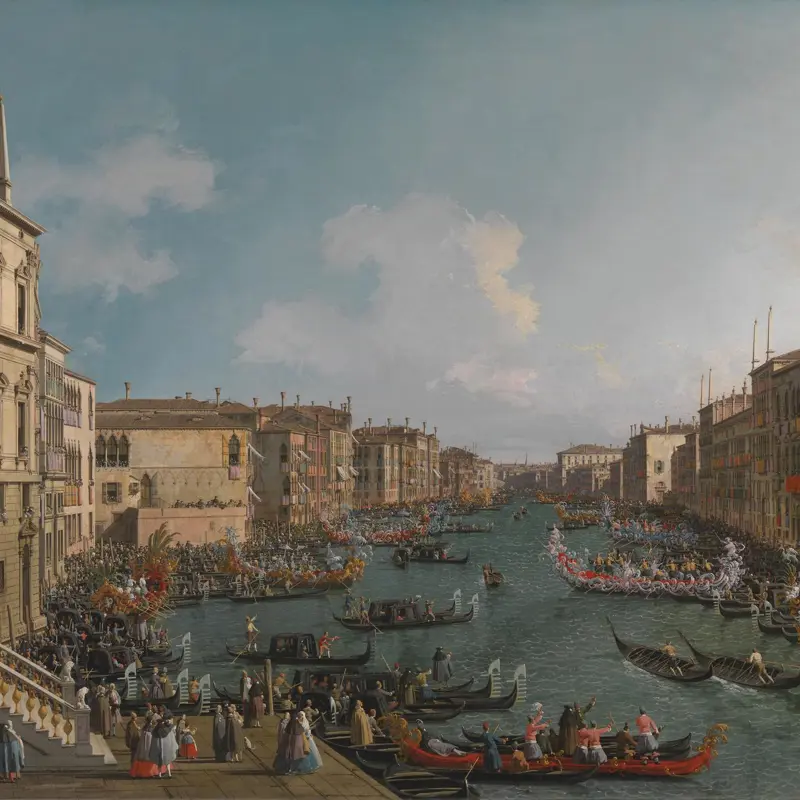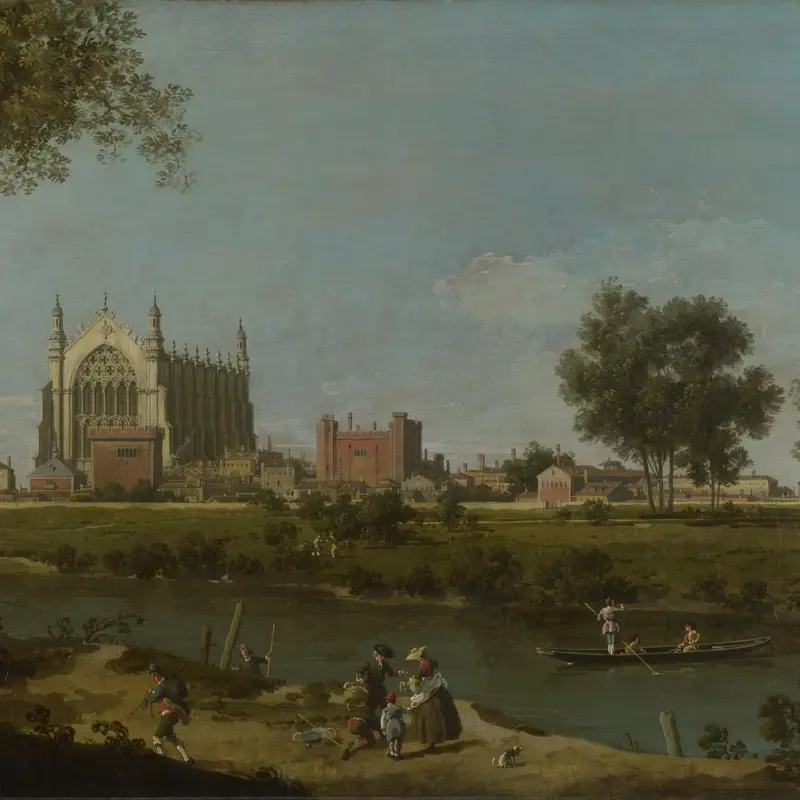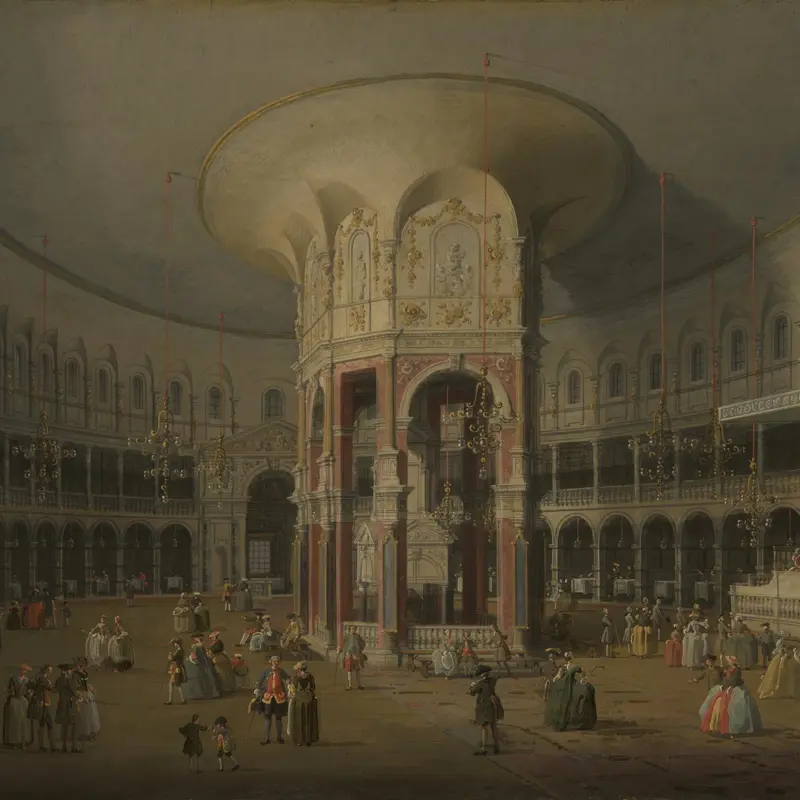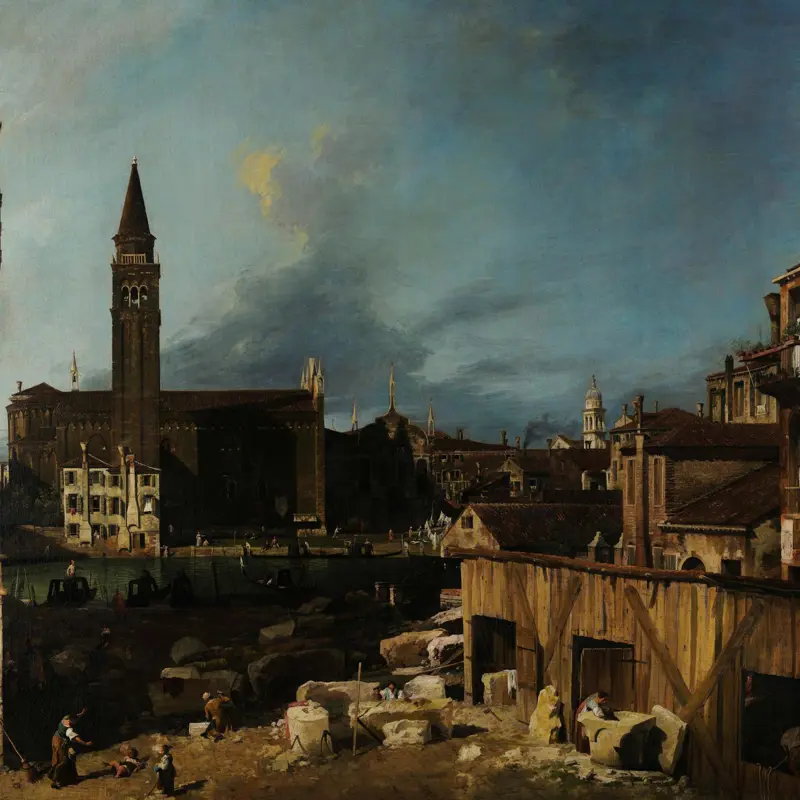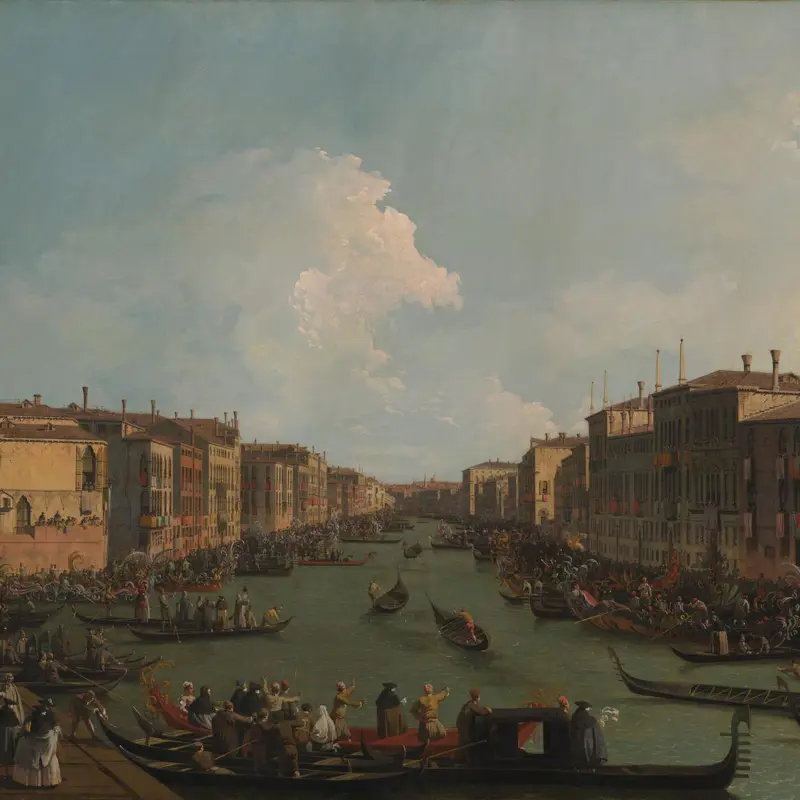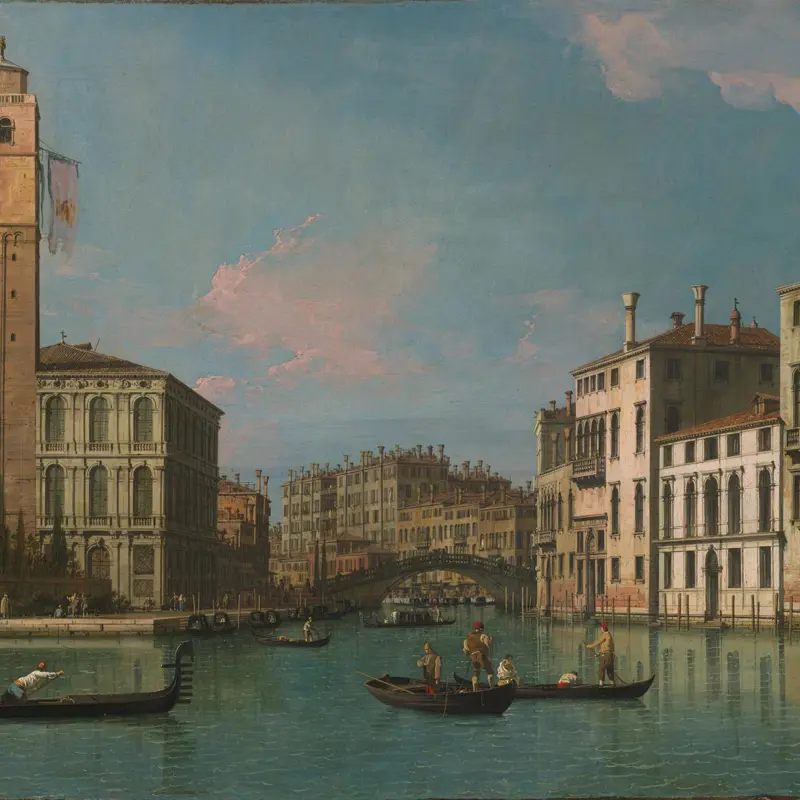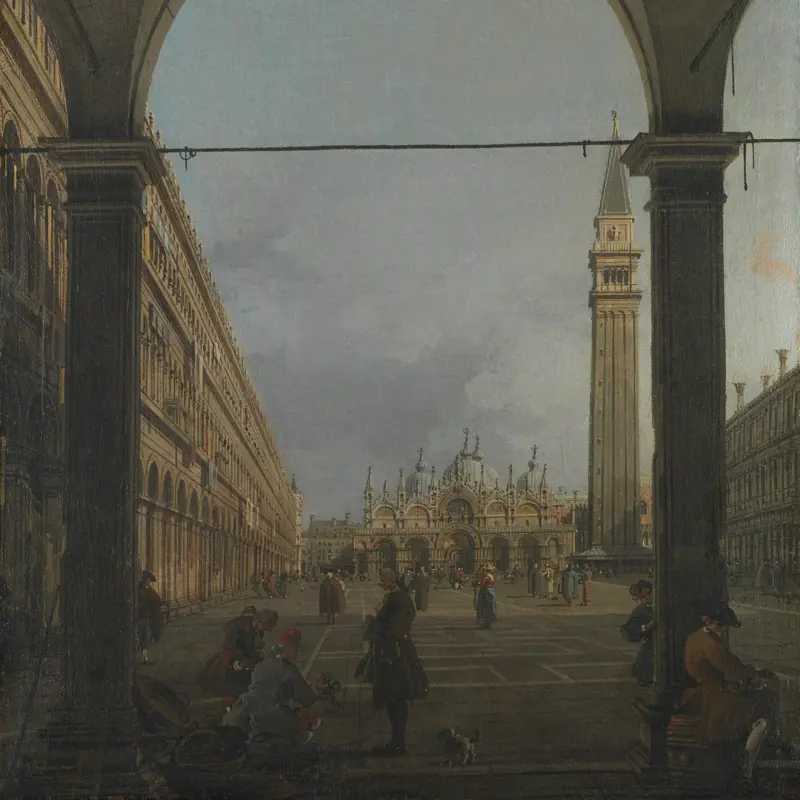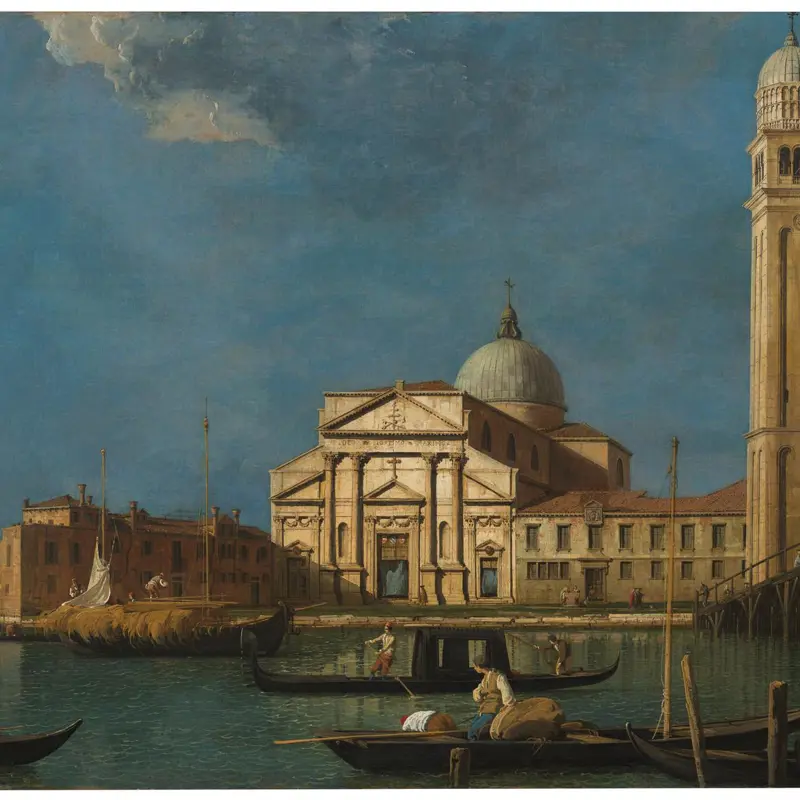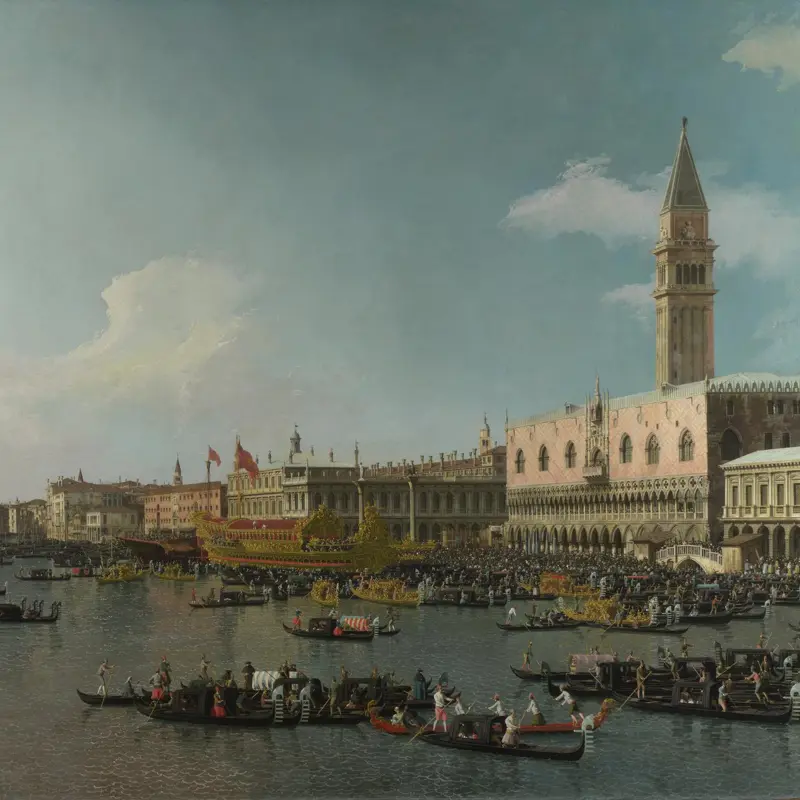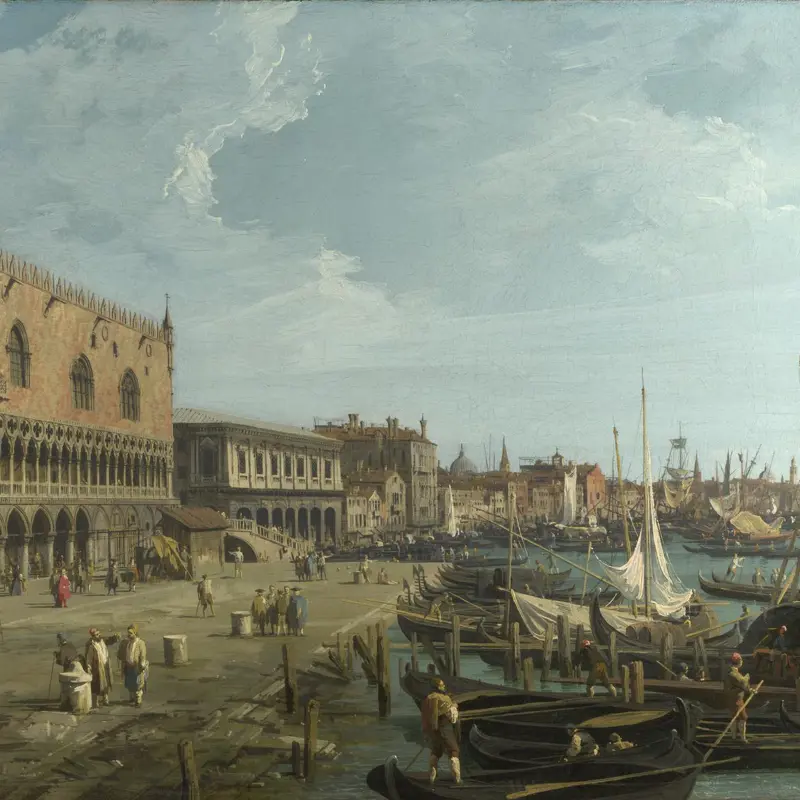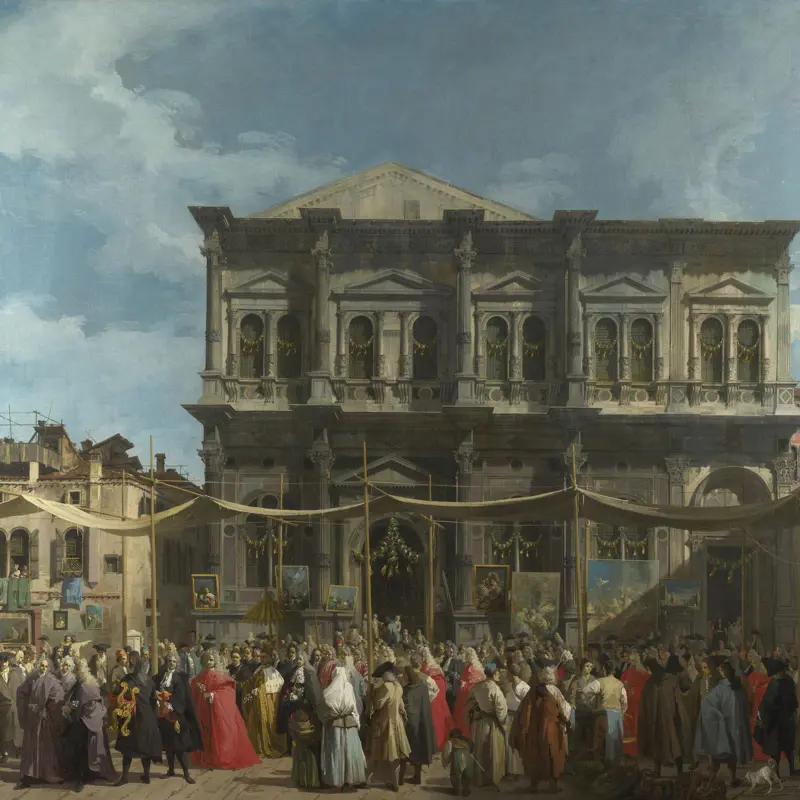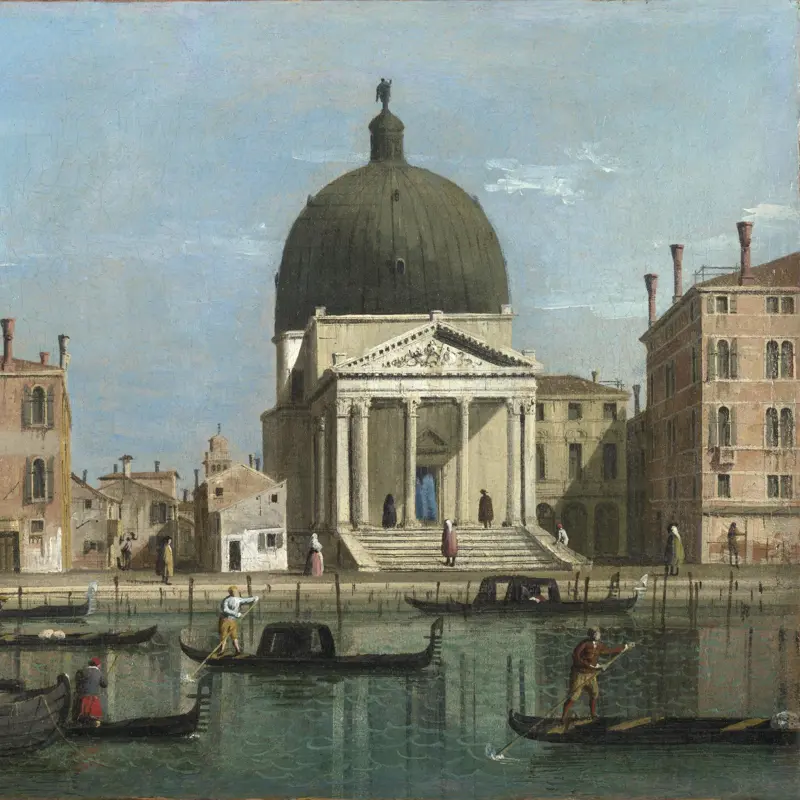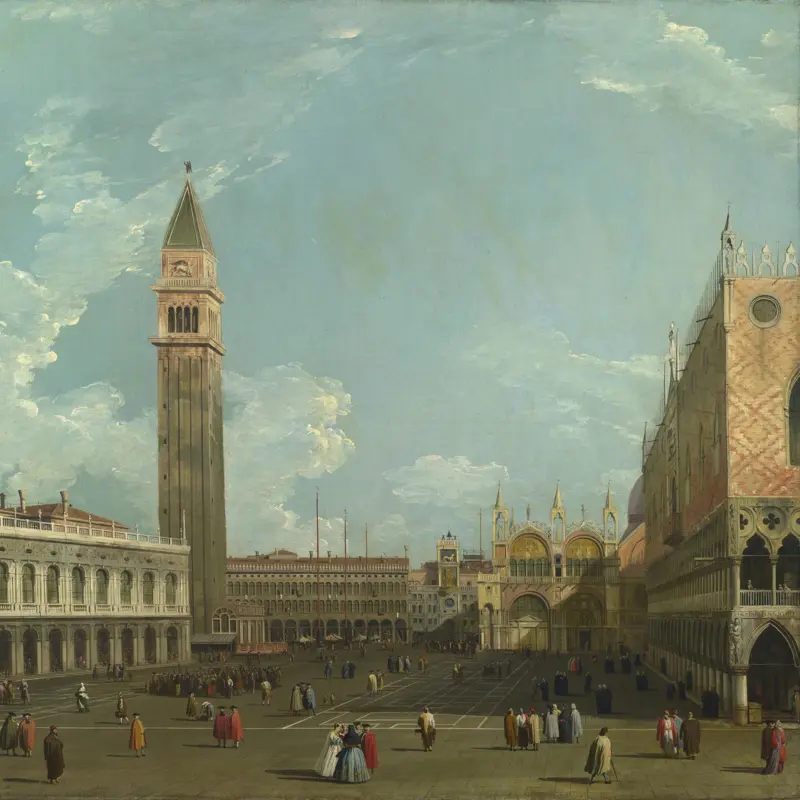Canaletto, 'Venice: Palazzo Grimani', about 1756-68
About the work
Overview
This work is almost a portrait of a building: the imposing facade of the Palazzo Grimani fills nearly the entire composition. Boatmen emerge from the left and right just in front of us, adding a sense of movement, while figures composed of dots and daubs of paint stand on the palace’s steps.
Palazzo Grimani, built between 1556 and 1575 for Gerolamo Grimani, Procurator of San Marco, was one of the outstanding buildings of Renaissance Venice. It was admired during the eighteenth century and included in Antonio Visentini’s Admiranda Urbis Venetae, a series of architectural drawings of Venetian palaces.
We don't know exactly when Canaletto painted this, but it was probably after his return to Venice from London in 1755; he died in 1768. He liked to work on a smaller scale during his mature years, and his touch became lighter and freer, with architectural details consisting of black outlines and muted colours applied with great assurance.
Key facts
Details
- Full title
- Venice: Palazzo Grimani
- Artist
- Canaletto
- Artist dates
- 1697 - 1768
- Date made
- about 1756-68
- Medium and support
- oil on canvas
- Dimensions
- 30.5 × 38.8 cm
- Acquisition credit
- Wynn Ellis Bequest, 1876
- Inventory number
- NG941
- Location
- Not on display
- Collection
- Main Collection
- Previous owners
Provenance
Additional information
Text extracted from the ‘Provenance’ section of the catalogue entry in Michael Levey, ‘National Gallery Catalogues: The Seventeenth and Eighteenth Century Italian Schools’, London 1986; for further information, see the full catalogue entry.
Exhibition history
-
2015Sacred Spaces: The Lycett Green CollectionYork Art Gallery1 August 2015 - 6 March 2016
Bibliography
-
1903J. Ruskin, Modern Painters, eds E.T. Cook and A. Wedderburn, The Works of John Ruskin, 39 vols, London 1903
-
1931G. Boschieri, 'Il Palazzo Grimani a San Luca', Rivista di Venezia, 1931, pp. 461ff
-
1956Levey, Michael, National Gallery Catalogues: The Eighteenth Century Italian Schools, London 1956
-
1960R. Gallo, 'Michele Sanmicheli a Venezia', in Michele Sanmicheli, Verona 1960, pp. 97-160
-
1971M. Levey, The Seventeenth and Eighteenth Century Italian Schools, London 1971
-
1972S. Kozakiewicz, Bernardo Bellotto, London 1972
-
1976W.G. Constable and J.G. Links, Canaletto: Giovanni Antonio Canal, 1697-1768, revised edn, Oxford 1976
-
1978V. Fontana, 'Costruire a Venezia nel Cinquecento', Quaderni de la ricerca scientifica, 106, 1978
-
1985A. Corboz, Canaletto: Una Venezia immaginaria, Milan 1985
-
1986Levey, Michael, National Gallery Catalogues: The Seventeenth and Eighteenth Century Italian Schools, London 1986
-
1989W.G. Constable and J.G. Links, Canaletto: Giovanni Antonio Canal, 1697-1768, 3rd edn, Oxford 1989
-
1992M. Hochmann, 'Le mécénat de Marino Grimani. Tintoret, Palma le Jeune, Jacopo Bassano, Giulio del Moro et le décor du palais Grimani; Véronèse et Vittoria à San Giuseppe', Revue de l'art, 95, 1992, pp. 41-51
-
1994J.G. Links, Canaletto, revised edn, London 1994
-
2001
C. Baker and T. Henry, The National Gallery: Complete Illustrated Catalogue, London 2001
About this record
If you know more about this work or have spotted an error, please contact us. Please note that exhibition histories are listed from 2009 onwards. Bibliographies may not be complete; more comprehensive information is available in the National Gallery Library.

